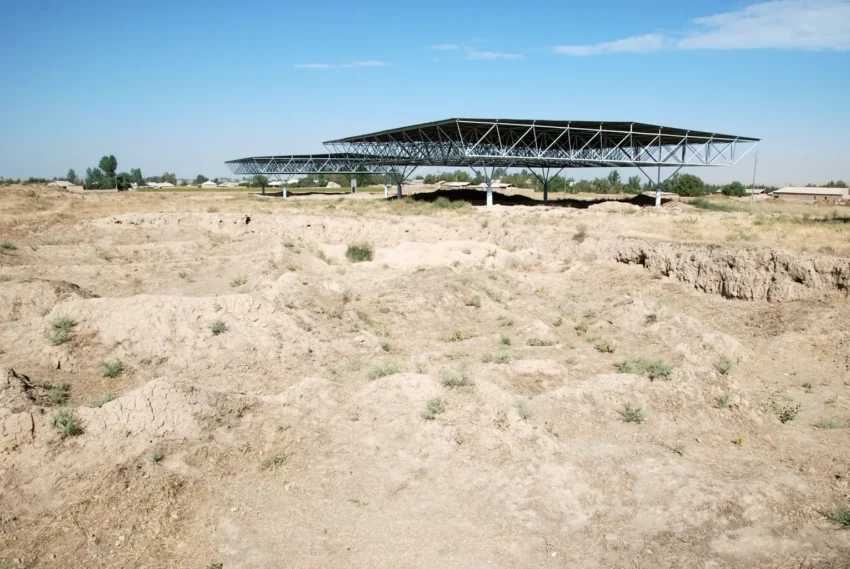Unearthing Sarazm’s Rich History
Nestled in north-western Tajikistan, the ancient town of Sarazm (Tajik: Саразм) stands as a testament to human civilization dating back to the 4th millennium BC. This UNESCO World Heritage Site, part of the city of Panjakent in Sughd Region, boasts a population of 27,877 as of 2015. Sarazm includes 21 villages, with Chimqal’a as the administrative seat. The archaeological site near Sohibnazar, on the Zeravshan River’s left bank, highlights its proximity to the Uzbekistan border.
Get your dose of History via Email
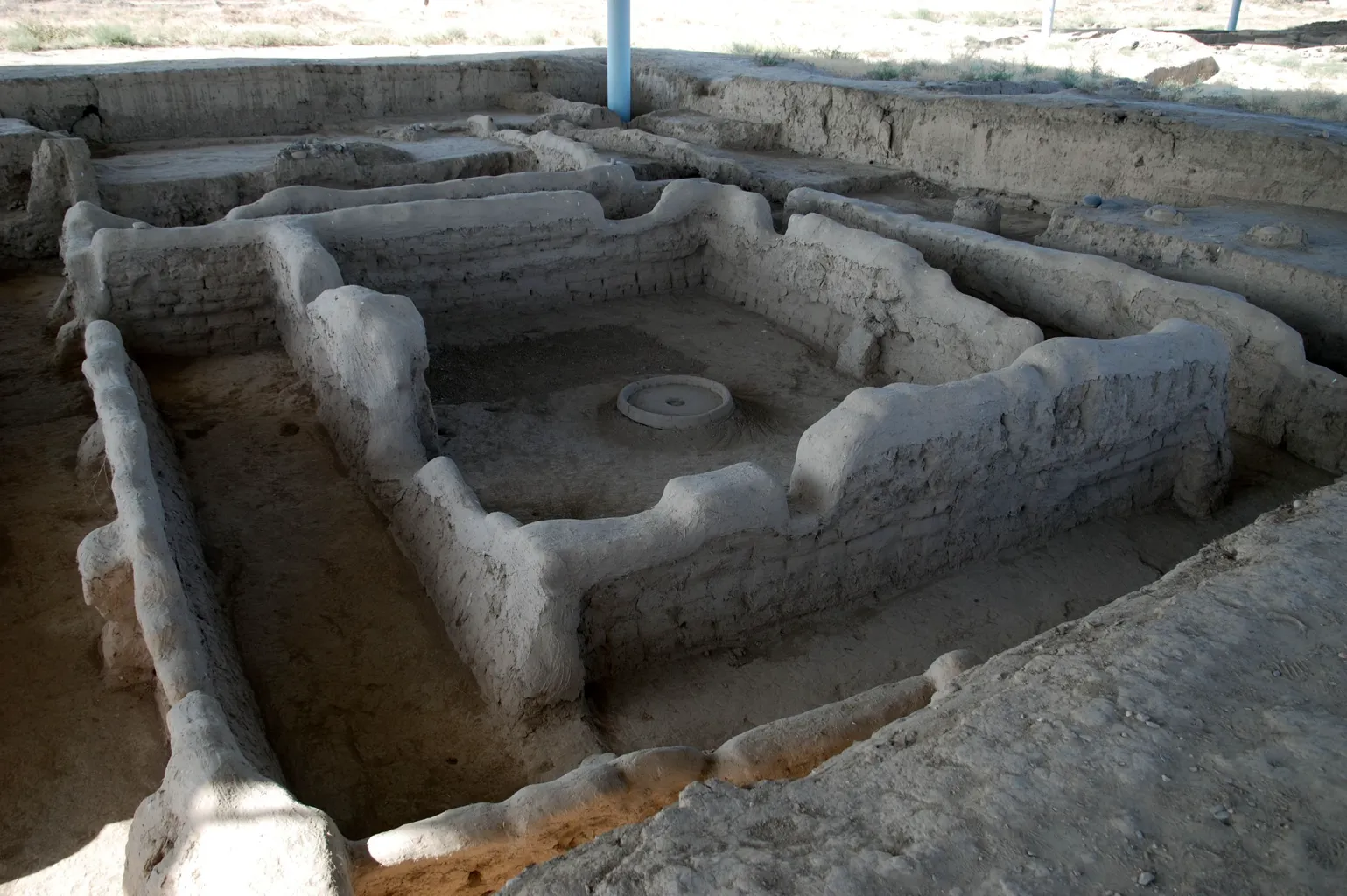
Sarazm’s Cultural Significance
Sarazm’s culture predates the Andronovo steppe culture’s arrival in South Central Asia in the 2nd millennium BC. This proto-historical agricultural society is a significant archaeological interest. Its vast economic network once stretched from the Turkmenistan steppes and the Aral Sea to the Iranian Plateau and the Indus Valley.
Archaeological Discoveries and Excavations
Located 15 kilometers west of Panjakent, Sarazm spans an area of about 1.5 km in length and up to 900 meters in width. At its peak, it covered up to 90 hectares. The site, first excavated in 1977 by Abdullah Isakov, revealed Sarazm’s role as the earliest known proto-historical agricultural society in this region. Subsequent excavations in 1987 expanded the site’s exploration.
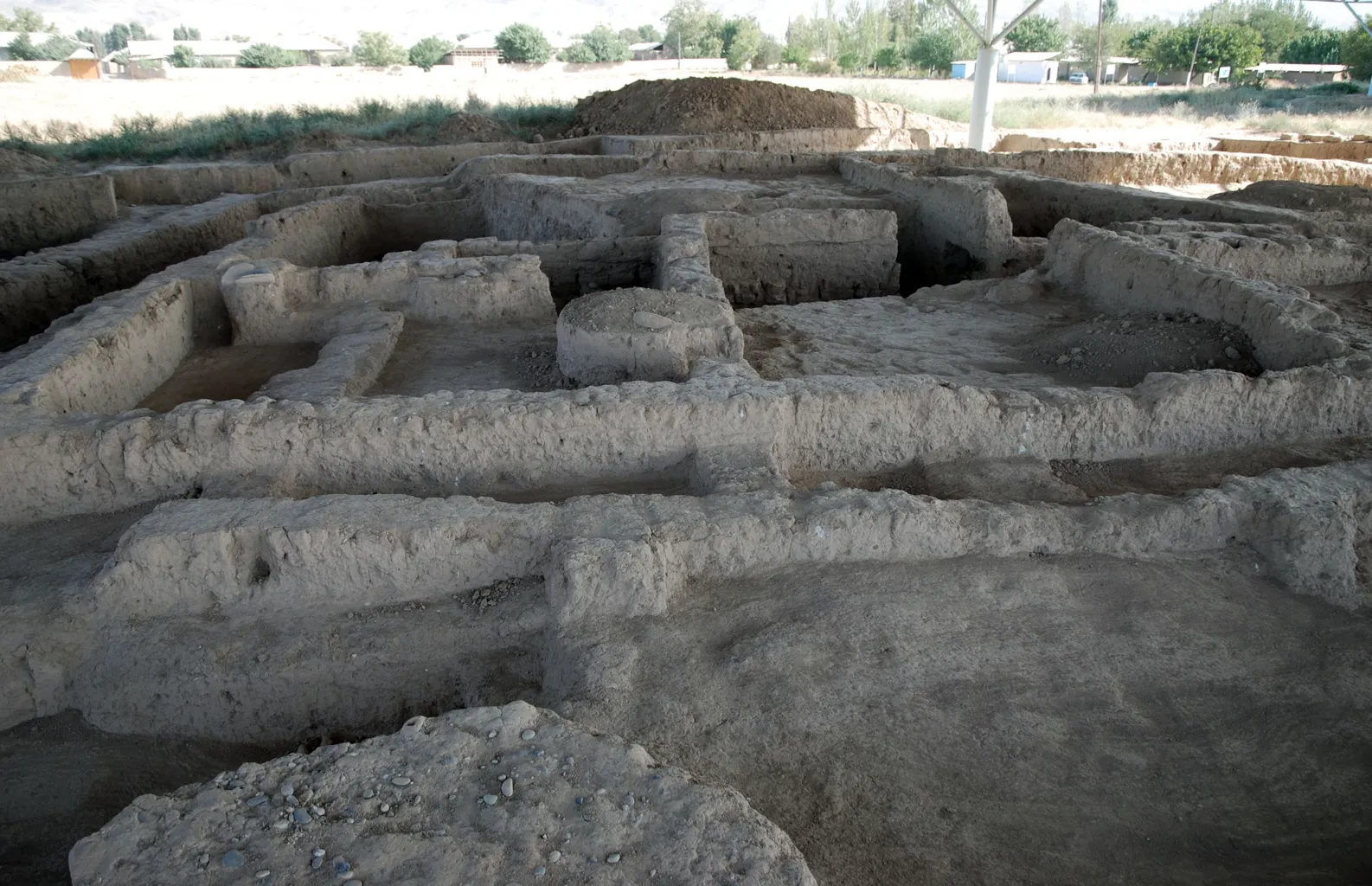
International Cooperation in Research
Sarazm’s exploration has been a collaborative effort between Tajikistan and international researchers. Notably, French and Tajik researchers partnered from 1984 onwards, leading to a series of fruitful excavations. In 1985, a cooperation agreement between the CNRS and the Tajik Academy of Science furthered research and preservation efforts. American professors also joined the excavation as part of a joint USSR-USA archaeological exchange program.
Stratigraphy and Dating
Sarazm’s site consists of four distinct layers of occupation, with periods of abandonment in between. Radiocarbon dating initially established these layers, revealing continuous human activity from the early 4th millennium BC. This dating was later confirmed through cultural artifacts like Turkmen clay shards and Togau ceramics.
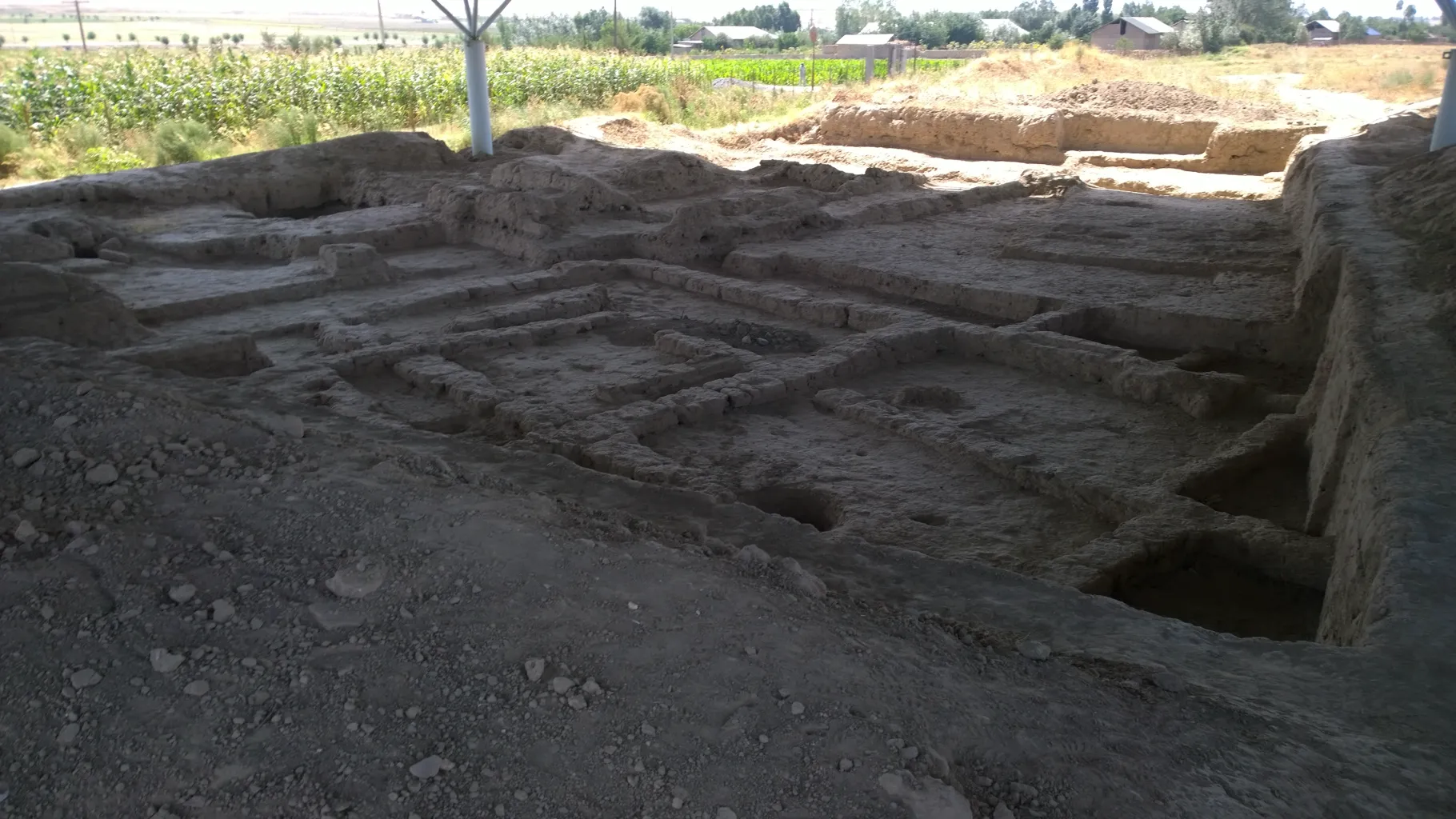
Economic and Agricultural Activities
Sarazm’s economy thrived on agriculture, herding, and metallurgy. Archaeological finds include daggers, chisels, and decorative metal pieces. The town was a significant metallurgical center, exporting goods across Central Asia. Irrigation from the Zeravshan River supported agriculture, with crops like wheat and barley similar to those found in Pakistan and China. Herding focused on cattle, sheep, and goats, maximizing secondary products like milk and wool.
Architectural Marvels
Sarazm’s architecture features multi-room habitations and communal buildings, constructed from raw earth bricks and hand-shaped earth. Notable structures include complex buildings with courtyards and bread ovens, and some buildings likely served as cult areas with large hearths. Fortifications were also discovered, showcasing the site’s strategic importance.
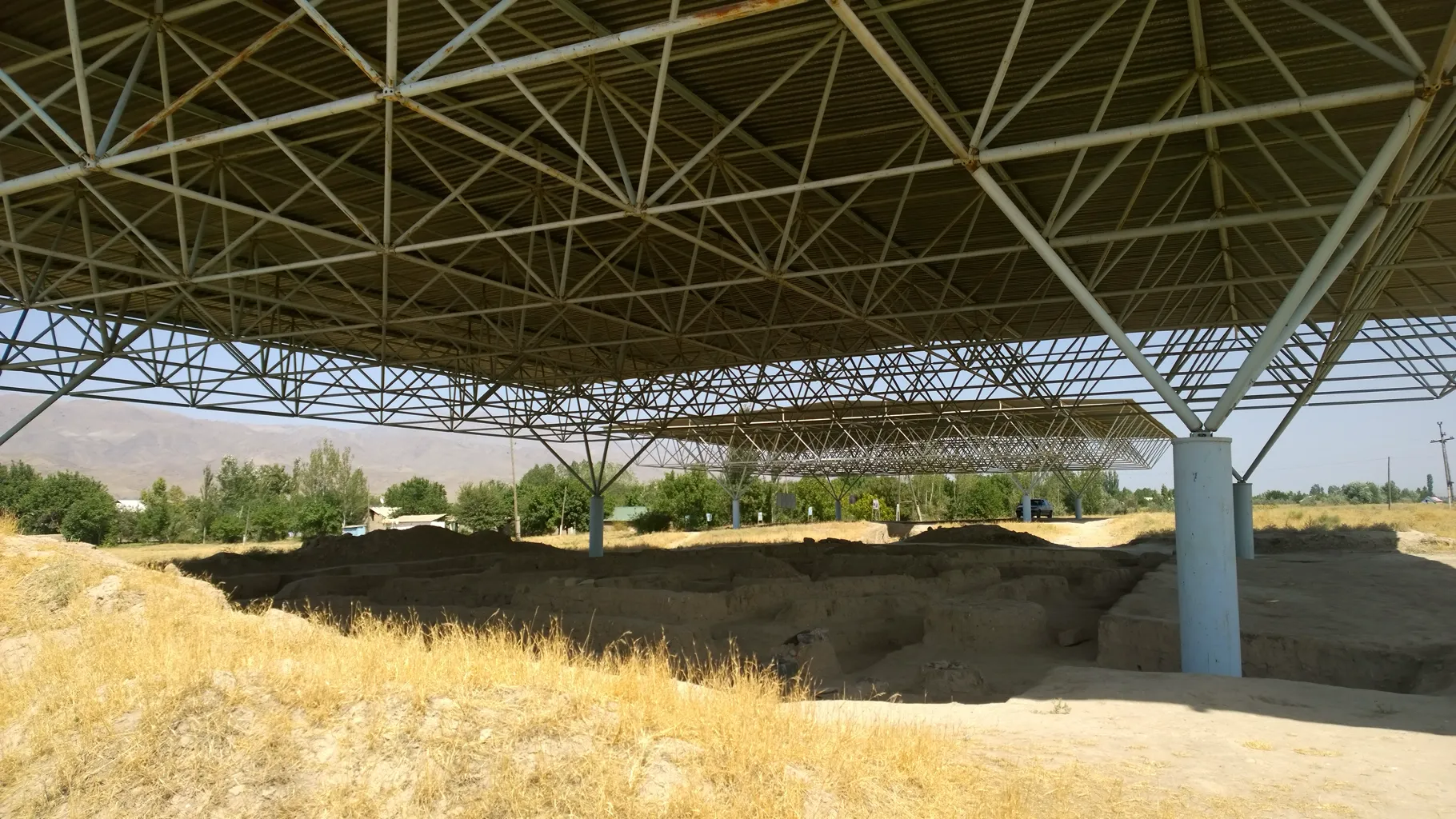
Burial Practices
Sarazm’s burial sites, marked by circular walls, contained valuable objects like pottery and beads. Genetic studies suggest the inhabitants originated from southern Central and Southwest Asia, linking them to other Eneolithic sites in Turkmenistan.
Artistic and Cultural Flourishing
At its economic peak, Sarazm saw a flourishing of artistic production. Pottery adorned with circles, crosses, and triangles used vibrant pigments. Terracotta statuettes of women and animals reflect the city’s cultural and religious practices. The people of Sarazm had altars for sacred fires, indicating complex religious beliefs.
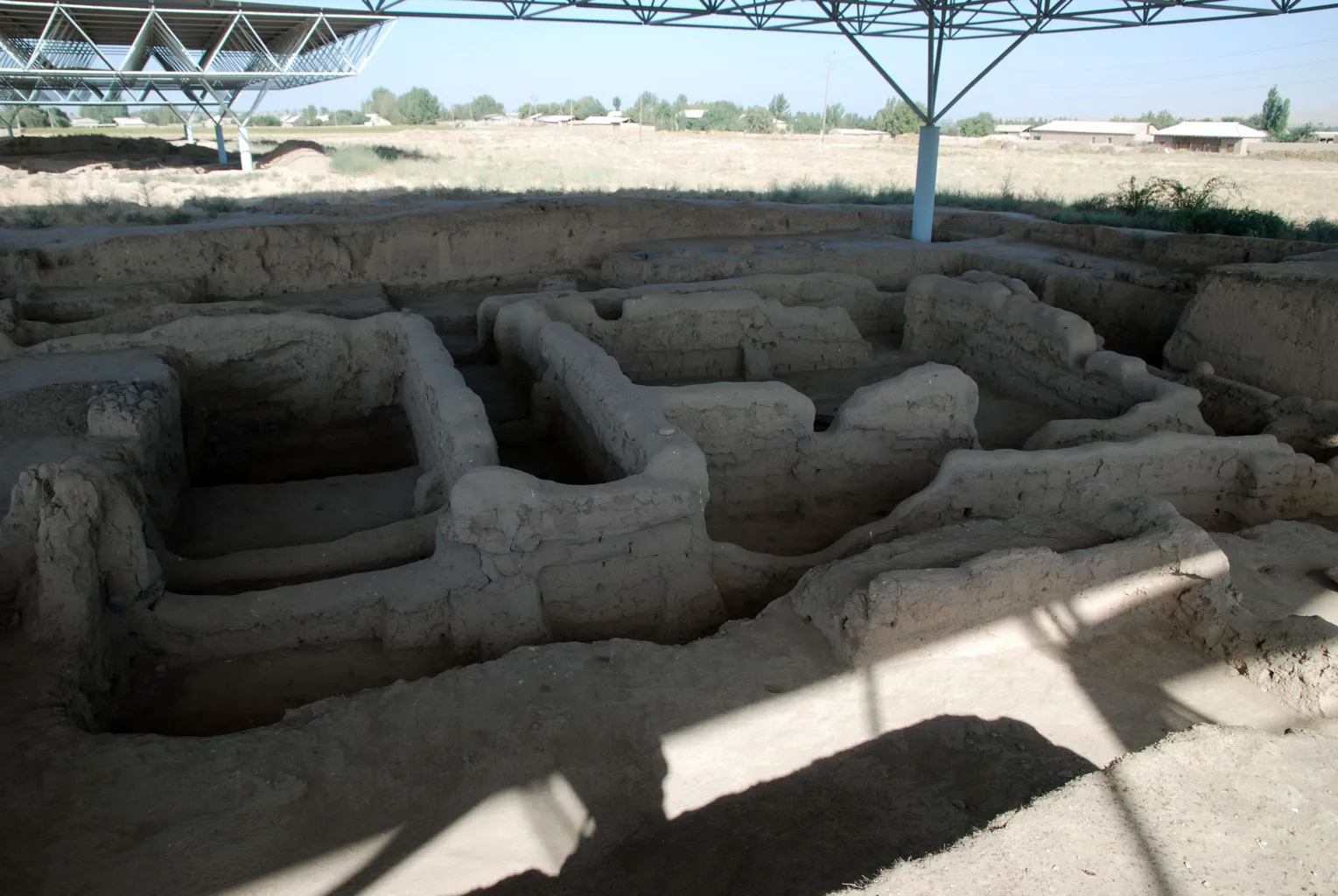
World Heritage Recognition
In July 2010, Sarazm earned its place on the World Heritage List. This recognition highlights its significance in the development of human settlements in Central Asia. Efforts to protect the site include metal roofing and soil reburial to preserve fragile areas. Local initiatives and the CRATerre research institute have developed protective coatings using rice husk and stabilized earth.
Sarazm remains a valuable window into ancient Central Asian civilizations, showcasing the rich tapestry of human history and cultural development.
Sources:


